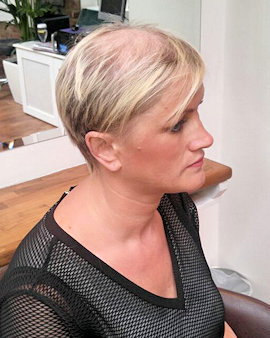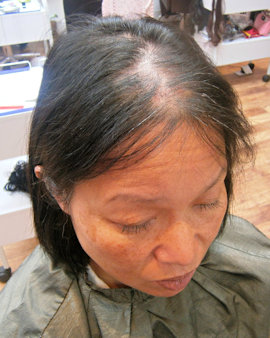Anaemia - Fragile Hair and Using the Intralace System™
Women who are suffering from hair loss and are considering using the Intralace system™, should consider consulting their GP, Dermatologist or Consultant Trichologist regarding Anaemia. This condition can leave hair strands weak and brittle and generally not as healthy. Healthy remaining hair is important for use of the Intralace system™ and will contribute to the success of Lucinda Ellery hair loss management.
The following information is supplied by Consultant Trichologist Alison Merchant Jones MIT
Anaemia and Hair Handling
Telogen Effluvium (increased hair shedding) is a hair loss condition that can be triggered by many influences. Severe illness, high fever, sudden weight loss, stress, bereavement, to name a few, and the one I wish to discuss is the effect anaemia has on the developing hair follicle.
Hair developing in the follicle is affected at a critical stage if the person has anaemia. The area involved is the zone of keratinisation and lies above the hair bulb and is where the hair “hardens”. This process allows the terminal hair to be strong enough to withstand handling when it emerges through the scalp.
In the anaemic state the zone of keratinisation is not efficient and the terminal hair does not harden sufficiently to withstand much handling, does not grow to its maximum length and falls out or breaks off prematurely.
How Can I Discover if I am Anaemic?
A blood test is required through your GP.
Serum ferritin is an iron storage protein, the levels are related to the amount of iron stored in the body tissues. Serum ferritin level is useful in evaluating the total body storage of iron. It can detect early iron deficiency anaemia.
The minimum level required to maintain normal healthy hair growth is between 80-100ug/L. Most GP’s will recognise levels as low as 22-80ug/L as normal. This is because the “normal” range is between 22-330ug/L and no action is normally taken when in fact iron supplementation should be administered for at least eighteen months, or until the minimum level of between 80-100ug/L has been maintained for at least six months without the use of iron. Some people may always need to take it in a mild form to maintain their level.




